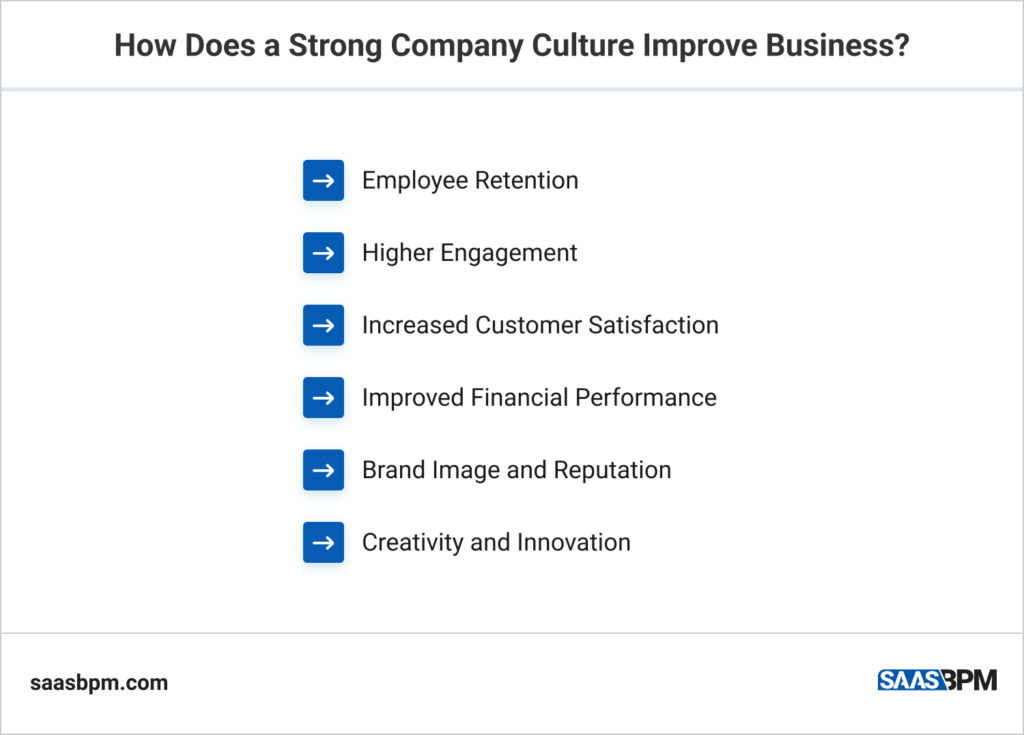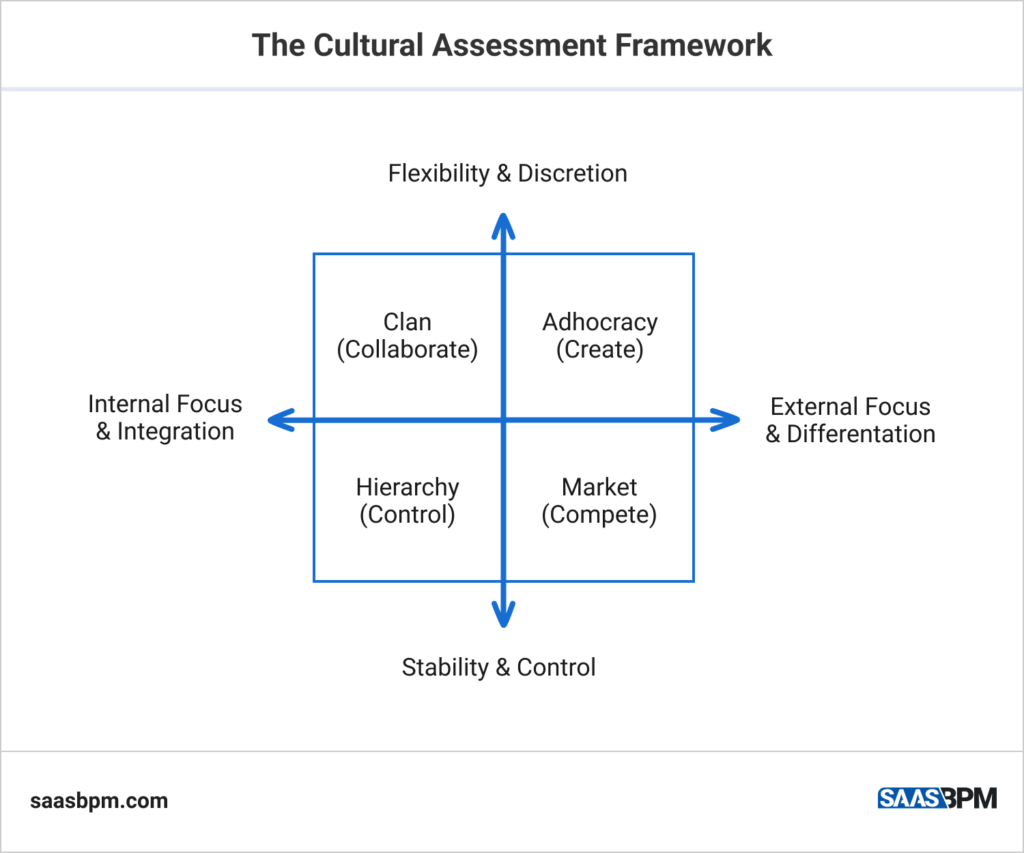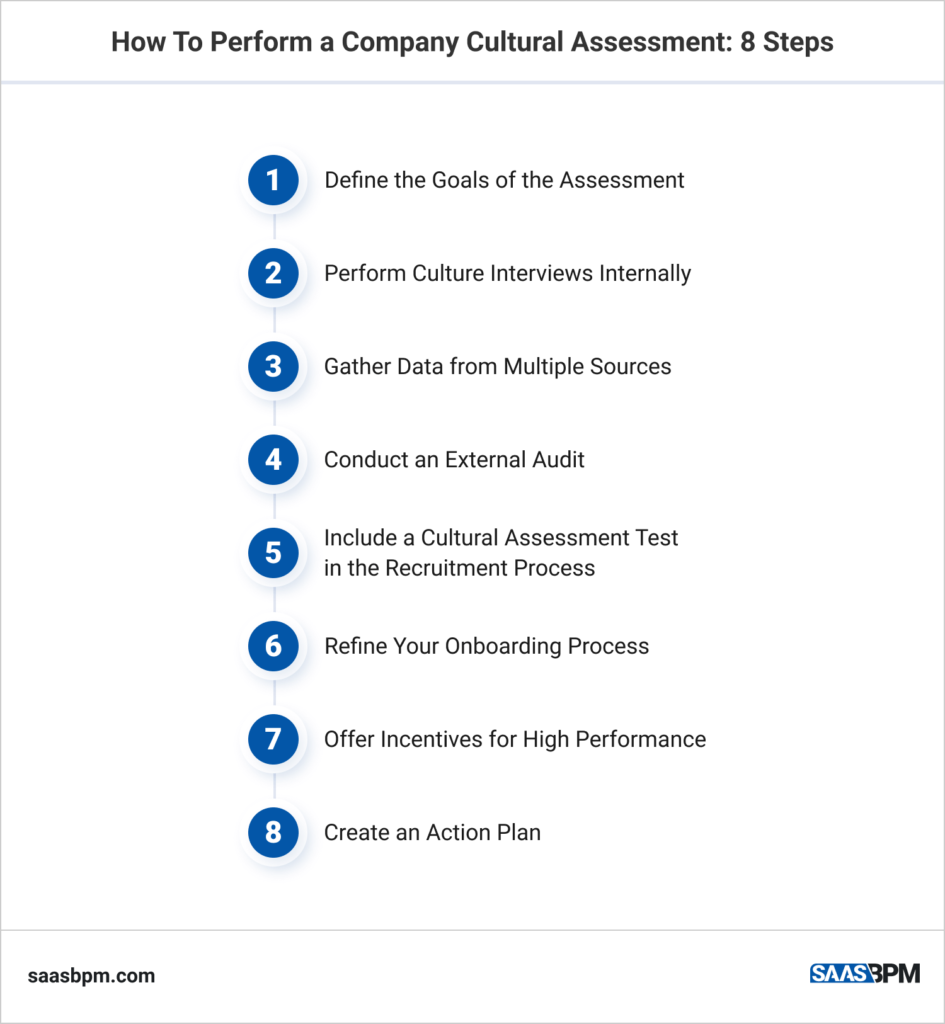The company culture of your organization impacts everything from productivity and engagement to retention and growth. While there isn’t a “company-wide template,” or set blueprint for every business, you can (and should!) carry out a cultural assessment on an ongoing basis. This is a great way to uncover and monitor the unique pillars that make up your company culture to ensure success.
Developing and maintaining positive company culture is essential for any business. By taking the time to analyze it and make improvements, you can create a more productive and engaging work environment for your employees. This guide will walk you through the steps of cultural assessment so that you can identify areas in need of improvement and take action to improve them.
What Shapes a Company Culture?

There are many factors that contribute to the development of solid company culture. It begins with the values, mission, and vision of the organization and through the actions and behaviors of employees. The physical environment, company policies, and even the way customers are treated all play a role in shaping company culture.
It’s important to note that company culture is not static. It’s always evolving and changing as the organization grows and adapts. As such, it’s important to regularly assess company culture to ensure that it aligns with the goals of the business.
How Does a Strong Company Culture Improve Business?
Investing in company culture has been shown to improve a number of key business outcomes. If managed well, it can lead to:

Employee Retention: In order to keep top talent, it’s important to create a working environment that employees enjoy. Strong company culture can help with this by fostering a sense of belonging and community.
Higher Engagement: Employees who feel like they’re part of positive company culture are more likely to be engaged in their work. This leads to improved productivity and overall team performance.
Increased Customer Satisfaction: When employees are happy and engaged, they’re more likely to provide high-quality service to customers. As a result, customer satisfaction and loyalty improve.
Improved Financial Performance: Businesses with strong company cultures have been shown to outperform the stock market by a significant margin.
Brand Image and Reputation: A positive company culture can help improve the brand image and reputation of the organization. This can lead to more customers and businesses wanting to work with you.
Creativity and Innovation: Employees who feel comfortable expressing themselves and taking risks are more likely to be creative and innovative. Consequently, they feel more empowered tp contribute to the development of new products, services, and processes.
What Is a Cultural Assessment?
A cultural assessment is a process of evaluating the current state of company culture. It involves analyzing the various factors that contribute to it and exploring how well they align with the goals of the organization. The assessment can be used to identify areas in need of improvement and formulate a plan to address them.
The Cultural Assessment Framework (also known as Competing Values Framework, or CVF) is a great way to properly define the culture in your organization and detect areas for improvement. The CVF was developed by Robert Quinn and Kim Cameron at the University of Michigan and it’s composed of four key dimensions:

Clan: This dimension focuses on the family-like feeling within the organization. Employees are supportive of one another and work together towards common goals.
Adhocracy: This dimension focuses on creativity and innovation. Employees are encouraged to experiment with new ideas for growth.
Market: This dimension focuses on competition. Employees are driven to achieve results and meet targets. There is a focus on efficiency and profitability.
Hierarchy: This dimension is based on stability and order. Employees focus on adherence to rules and procedures. There is a distinct chain of authority.
Each organization will fall somewhere on the spectrum for each of these dimensions. There is no “right” or “wrong” culture, but it’s important to assess where you fall so that you can identify areas in need of improvement.
How To Perform a Company Cultural Assessment: a Guide
Performing a company cultural assessment can be a great way to understand how your team works and identify any potential areas for improvement. By taking a look at factors like communication style, decision-making processes, and work ethic, you can start to build a plan for improving the overall culture of your business. Here are 8 strategies to ace your company cultural assessment:

Define the Cultural Assessment Goals
Before you begin, it’s important to take some time to define the goals of the assessment. What are you hoping to learn? What areas do you want to improve? By having a clear understanding of your objectives, you’ll be able to better focus your efforts and get more out of the cultural assessment.
Perform Culture Interviews Internally
A great way to get started is by conducting culture interviews with employees. This will give you a better understanding of how they perceive the current state of company culture and how they think productivity could be improved. Be sure to ask open-ended questions and give employees the opportunity to share their honest thoughts and feelings.
Gather Data from Multiple Sources
Don’t rely on a single source of information when performing your company cultural assessment. Apart from team members, you should also talk to customers and other stakeholders to get a well-rounded view of the company culture. You can use surveys, interviews, focus groups, or even just casual conversations to collect data.
Conduct an External Audit
In addition to talking to employees and stakeholders, it can be helpful to get an outsider’s perspective on company culture. You can do this by conducting an external audit. This involves bringing in a third party to evaluate the organization and provide feedback. This can be a great way to get an objective view of company culture.
Include a Cultural Assessment Test in the Recruitment Process

The best way to ensure your employees will contribute to your company culture and excel is to check if they have the X factor from the beginning. You can do this by including a cultural assessment test as part of your recruitment process. This will help you identify candidates who are a good fit for the company culture and weed out those who are not.
Refine Your Onboarding Process
Your onboarding process is a great opportunity to introduce new employees to the company culture and help them feel like they belong. Take some time to assess your current practices with the new hires and make sure it’s effectively communicating your company’s values and mission.
Offer Incentives for High Performance
One way to encourage employees to perform at their best is by offering incentives for high performance. This could be in the form of bonuses, paid time off, or other perks. Whatever you choose, make sure it’s something that will motivate your team to do their best work.
Create an Action Plan
Once you’ve gathered all of your data, it’s time to create an action plan to implement the necessary changes. This should include a list of specific goals and strategies for improving company culture. Be sure to involve employees in this process so that they feel ownership over the changes.
Final Things to Remember
A well-run company culture assessment can help to identify areas in which a business may need improvement, and provide a roadmap for enacting change. By taking into account the many factors that shape company culture, businesses can increase employee retention, improve customer satisfaction, and see financial gains. If you’re looking to assess your own company culture or are curious about how corporate culture affects business performance, be sure to follow the steps we’ve laid out above.

